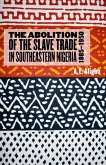This book reexamines slave trading in the early Middle Ages from a comparative perspective, situating it at the core of economic and political development in northern and eastern Europe. In focusing on the 'slaving zones' centred around the British Isles and the Czech lands, Fontaine traces the forced migration of enslaved people from the point of capture to their destinations across Europe, the North Atlantic, North Africa, and western Asia. The crux of the book are the changes of the ninth and tenth centuries prompted by increased demand, principally in the Islamic world as well as areas of Viking settlement. The desire to source more and more slaves led to changes in the practice of warfare to maximise captive taking, the logistics of slave trading and rulers' legal and economic relationships with slavery. By spanning the seventh through the eleventh centuries, this important study traces the growth, climax, and decline of slave trading in the early Middle Ages and establishes its role as a driver of connectivity.







